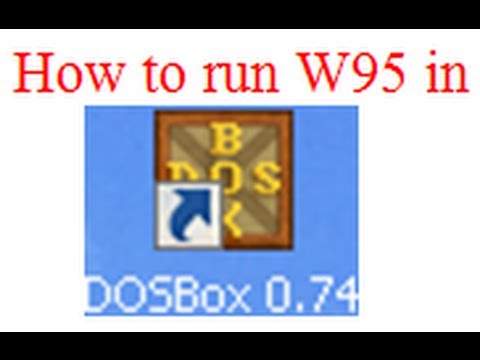
- INSTALLING WORDSTAR 2.0 ON DOSBOX WINDOWS 3.1 FULL
- INSTALLING WORDSTAR 2.0 ON DOSBOX WINDOWS 3.1 PORTABLE
- INSTALLING WORDSTAR 2.0 ON DOSBOX WINDOWS 3.1 SOFTWARE
- INSTALLING WORDSTAR 2.0 ON DOSBOX WINDOWS 3.1 PC
This feature provided users with a sense of reassurance, knowing in advance where pages would end and begin, and where text would be interrupted across pages.ĭue to WordStar's sophistication, the company's extensive sales and marketing efforts, and bundling deals with computer makers such as Osborne, MicroPro's sales grew from $500,000 in 1979 to $72 million in the fiscal year 1984, surpassing the market leader, Electric Pencil.
INSTALLING WORDSTAR 2.0 ON DOSBOX WINDOWS 3.1 FULL
Furthermore, WordStar had a unique feature where it displayed a full line of dash characters on the screen, showing where page breaks would occur during hardcopy printout.
INSTALLING WORDSTAR 2.0 ON DOSBOX WINDOWS 3.1 SOFTWARE
WordStar was the first microcomputer word processor to offer mail merge and textual WYSIWYG, which were innovative features that were not available in any other word processing software at that time.

After enhancing WordMaster with features and support for the CP/M operating system, the product was renamed WordStar and launched at a price of $495 with an additional $40 for the manual. He hired John Robbins Barnaby, who wrote a word processor called WordMaster and a sorting program called SuperSort, both in Intel 8080 assembly language. Rubinstein established MicroPro with the aim of creating software that could be sold through the retail computer stores that were emerging at that time. Rubinstein, who had previously negotiated software contracts with Microsoft and Digital Research while he was still an employee of IMSAI, an early microcomputer company. WordStar is a word processing software that was first introduced in June 1979 by MicroPro International Corporation. WordStar was a software giant that may have fallen, but it will always be remembered as a pioneer in the world of word processing. While it may not be as widely used as it once was, its influence is still felt today, and its legacy lives on. In conclusion, WordStar was a trailblazer that changed the word processing industry forever. Its minimalist design and ease of use were groundbreaking at the time, and its impact on the industry is still felt today.

It was a pioneer in its time, and its legacy continues to influence the way we interact with word processors today. WordPerfect, its main rival, took advantage of these weaknesses and overtook WordStar as the most widely used word processor in 1985.ĭespite its decline, WordStar left an indelible mark on the software industry. It made it difficult for the software to add new features and improve its performance, ultimately leading to its downfall.
INSTALLING WORDSTAR 2.0 ON DOSBOX WINDOWS 3.1 PC
However, as the market shifted towards the IBM PC and Microsoft Windows, the same portability that made WordStar so successful became a hindrance. WordStar's commands and controls were relatively similar across different platforms, making it easy for users to move between them with ease.
INSTALLING WORDSTAR 2.0 ON DOSBOX WINDOWS 3.1 PORTABLE
Its popularity soared even higher when it was included with the Osborne 1 portable computer, which was a game-changer for the industry. This portability made WordStar highly popular and allowed it to become the de facto standard for word processing in the small computer market.

This made it highly portable and allowed it to be easily ported across the many platforms that were available in the early 1980s.

The software was built with a philosophy that was ahead of its time, making as few assumptions as possible about the operating system and machine hardware. Its early versions were the work of a lone author, Rob Barnaby. WordStar was first published by MicroPro International in 1978, written for the CP/M-80 operating system. Let's take a trip down memory lane and explore the rise and fall of this software giant. Ah, WordStar, the once mighty word processing application that dominated the market in the early and mid-1980s, only to be replaced by its rival, WordPerfect.


 0 kommentar(er)
0 kommentar(er)
